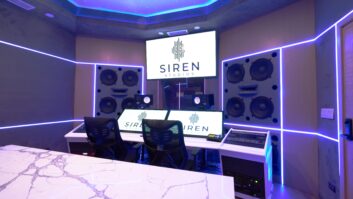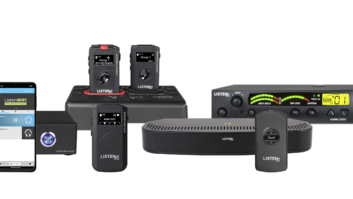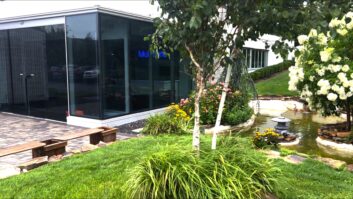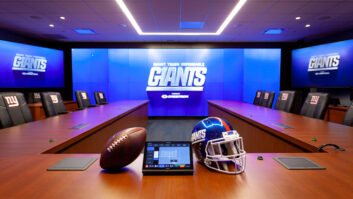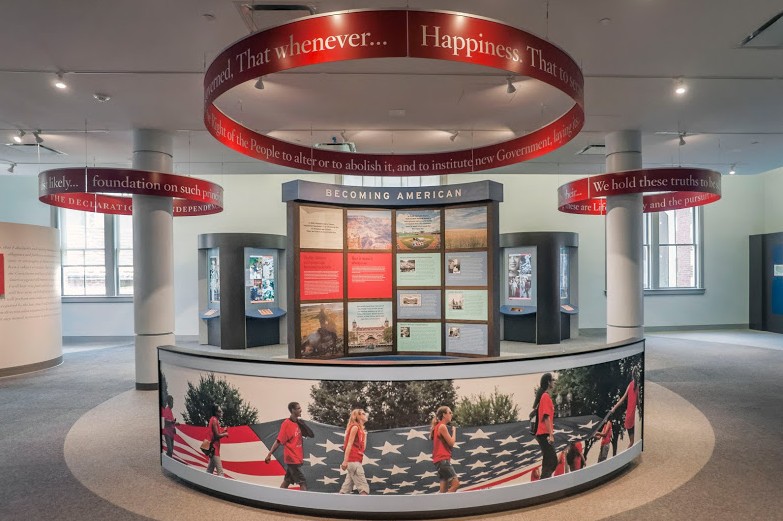
After a hiatus caused by Hurricane Sandy in 2012, Electrosonic has returned to the Ellis Island National Museum of Immigration New York harbour for a second phase of installations.
Newly renamed, the museum has opened new galleries in the former Kitchen and Laundry Building of the immigrant processing and detention station, which operated from 1892 to 1954 in New York harbour. Dedicated to the story of immigration in the years following Ellis Island’s closure, the galleries mark phase two of the Peopling of America Center. Electrosonic provided AV support for phase one, which covers immigrant arrival in the Pre-Ellis era, and opened in 2011, and returned to complete phase two following a long delay caused by Hurricane Sandy, which struck the north-eastern US in October 2012.
The Statue of Liberty-Ellis Island Foundation raised the funds for and oversaw the project and engaged ESI Design as the exhibition designer, with Michael Schneider as technical lead.
For phase two, Electrosonic was tasked with installing all the racks of equipment, installing the displays and audio peripherals in the interactive kiosks, and running all the wiring and fiber optic cabling. Hurricane Sandy flooded the basement level of the building and destroyed the electrical, communications, IT, and HVAC systems, which supported the building’s operations – including the Electrosonic racks that contained the exhibit equipment. All of these infrastructure systems have been relocated above future projected flood level. Entire mechanical, electrical and computer systems had to be replaced forcing a two-year delay in the project; it did not ramp up again until late 2014.
“In the meantime, some of the original team members from Hadley Exhibits, media content providers including History Channel, software vendors and Electrosonic were no longer available. Some equipment had been in storage and some additional equipment was required,” said Electrosonic’s Rick Nelson, project manager for phase two. Bryan Abelowitz was the account executive on the project. “Reassembling the team and bringing a project like this back online, while being careful not to incur ‘starting from scratch’ costs, was a challenge but was done cost-effectively,” Nelson added.
Visitors first encounter The Journey: New Eras of Immigration gallery where a Billboard of Greetings features a looped soundtrack comprised of greetings in world languages and fragments of immigrants’ stories. The track is driven by a stereo audio feed from Alcorn McBride’s AM-4 Digital Audio Machine.
The museum’s entrance area showcases the World Migration Globe. Two projectors housed inside the 5-foot radiant globe display images on the sphere; Gefen fibre extenders run from the exhibit to AMX show control. The AMX system individually controls, monitors, starts and stops the exhibits in both new galleries.
The Threads of Migration exhibit graphically shows the connections between visitors’ countries of origin and their current homes in the US. These threads build up on the 65in Samsung monitor as more and more visitors enter their data on three 17in Elo Touch Solutions touchscreens.
In the Citizenship Gallery (pictured) the majority of the interactive kiosks are portrait-mounted 23in Samsung monitors with interactive push buttons and BrightSign playback. Two Citizenship Test kiosks feature I-Tech displays and a keyboard emulator, which sends commands to a flash-driven computer in the control room.
Among the most compelling kiosks in this gallery are four Citizenship Narratives featuring portrait-mounted 46in Samsung monitors. These life-size conversations with new Americans tell often dramatic stories about how they came to US shores in recent years.
A rear-projection system supplied by Electrosonic displays a looped video of the Citizenship Oath for another exhibit. The short-throw Panasonic PT-EW640U projector with fixed-focus lens is mounted vertically with a mirror bounce. Content is driven by a BrightSign player.
The Population Map asks visitors to enter their ethnicity to see the density of their ethnic groups across the US. The kiosk features a 70in Sharp monitor, a 22in Elo Touch Solutions touchscreen immediately in front of the screen and three more mounted on the corner wall.
Equipment is not localised to the exhibits; all exhibits use Cat5 HDMI extenders. The 23in kiosks are controlled by relay control power units; the Citizenship Narratives and Citizenship Tests have Dataprobe iBoot network power controllers.
Electrosonic provided Stewart amps and all the exhibit speakers, including highly-directional units. Equipment includes TOA speakers and line arrays, Radius speakers and Innovox speakers. Each exhibit has an inductive loop amplifier for the hearing impaired.
The AMX show control system controls five Peavey DSP units to bump up audio from normal to louder mode when visitor traffic builds in the galleries.
All phase two source hardware is housed within an EER closet. Administrative computers are connected to the internet and the isolated local LAN, so remote access, updates and control can be achieved via TeamViewer.
